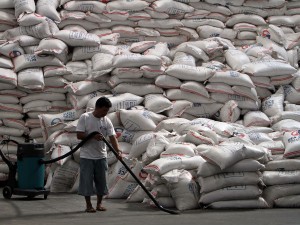The Philippines will buy 100,000 metric tons (MT) of rice from Vietnam to boost its buffer stock of the staple during the lean months.
National Food Authority (NFA) Administrator Angelito Banayo said the NFA council made the decision after determining that Vietnam’s rice was cheaper than Thailand’s.
The NFA council, he said, is finalizing the government-to-government deal.
The government also hopes to buy 20,000 MT of rice from Cambodia under a similar government-to-government contract to fill the 120,000-MT requirement.
That volume is the amount of rice the Philippine government has set for importation through government contracts. In 2011, the Philippines bought rice worth over P4 billion from Vietnam.
A few months ago, the NFA auctioned off permits to the private sector to import 380,000 MT of rice in two separate tranches.
The government needs to boost the rice supply in its warehouses this month to keep the supply and prices stable when the lean months set in.
The Philippines usually does not produce much rice between the months of July and September. As of today, the country’s buffer stock is good only for 22 days.
Banayo said the NFA warehouses must have a 30-day rice inventory by the end of June.
He noted that the slight drop in palay harvest in the first quarter squeezed the rice supply. “The assumption is that the second quarter (output) will be good but we’re still awaiting figures,” Banayo said.
According to the Bureau of Agricultural Statistics, the country’s total rice inventory as of April 1 was 2.64 million MT. This was 31.1 percent higher than the March inventory, but 14.4 percent lower than last year’s 3.08 million MT.
In the first three months of the year, the Department of Agriculture said, palay harvest was slightly lower at 3.99 million MT compared to the record-breaking harvest of 4.037 million MT in the same period last year.
A bountiful rice harvest is expected in the second quarter when the output from the early cropping season and from newly irrigated lands kick in. Kristine L. Alave
